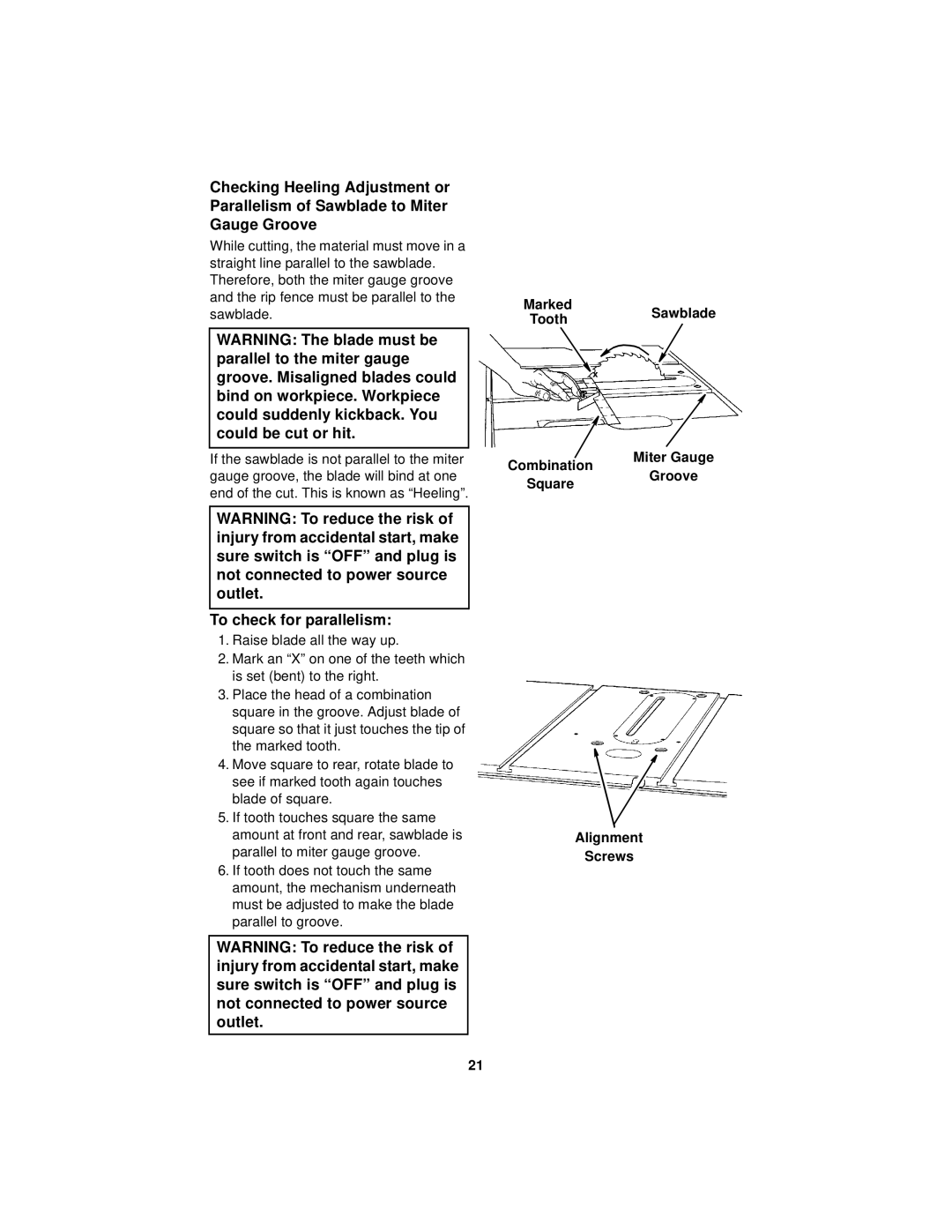
Checking Heeling Adjustment or Parallelism of Sawblade to Miter Gauge Groove
While cutting, the material must move in a straight line parallel to the sawblade. Therefore, both the miter gauge groove and the rip fence must be parallel to the sawblade.
WARNING: The blade must be parallel to the miter gauge groove. Misaligned blades could bind on workpiece. Workpiece could suddenly kickback. You could be cut or hit.
Marked
ToothSawblade
![]() x
x
If the sawblade is not parallel to the miter
Combination
Miter Gauge
gauge groove, the blade will bind at one end of the cut. This is known as “Heeling”.
WARNING: To reduce the risk of injury from accidental start, make sure switch is “OFF” and plug is not connected to power source outlet.
To check for parallelism:
Square
Groove
1.Raise blade all the way up.
2.Mark an “X” on one of the teeth which is set (bent) to the right.
3.Place the head of a combination square in the groove. Adjust blade of square so that it just touches the tip of the marked tooth.
4.Move square to rear, rotate blade to see if marked tooth again touches blade of square.
5.If tooth touches square the same amount at front and rear, sawblade is parallel to miter gauge groove.
6.If tooth does not touch the same amount, the mechanism underneath must be adjusted to make the blade parallel to groove.
WARNING: To reduce the risk of injury from accidental start, make sure switch is “OFF” and plug is not connected to power source outlet.
Alignment
Screws
21
